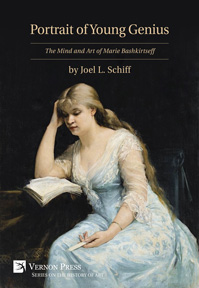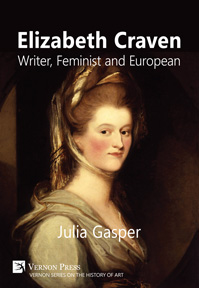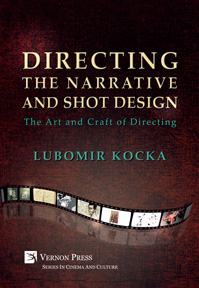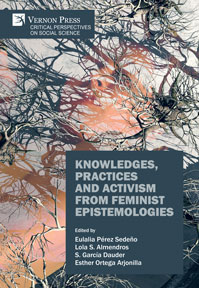Cinematic Women, From Objecthood to Heroism: Essays on Female Gender Representation on Western Screens and in TV Productions
Lisa V Mazey (Ed.)
by Lisa V Mazey (Indiana University of Pennsylvania), Yeojin Kim (Binghamton University), Mary Jane Androne (Albright College), Forrest Johnson (York University), Karen Tuthill-Jones (Connecticut Technical High School), Hyunyoung Moon (College of William and Mary, Virginia), Evangeline Kroon (York University), E. Leigh McKagen (Virginia Tech; Virginia Military Institute), E. Leigh McKagen (Virginia Tech; Virginia Military Institute)
Purchase this book
(click here to change currency)
This book is of major interest and high novelty in that it analyses the impact of the “male gaze” – an “old way of seeing” the editor Lisa Mazey says - on the representation of women in cinema and on TV. Our vision of gender roles in films has long been influenced by a male-dominated academic gaze and an industry that totally negated the work of women in the first decades following the birth of this artistic genre. In a post-“#me-too” period, this compilation of cultural essays dealing with the inequalities of treatment imposed for centuries on women in cinema and with the rise of a new female “post-pop culture” voice, is essential. It examines through an intersectional angle – including the presentation of the major role of lesbian actresses and directors - a highly invigorating study of the inertia of a massively static industry – cinema, which actually reproduces all the sexist norms and canons of western phallocratic societies. The book develops the idea that the 2010s have allowed an awakening and a growing awareness of the impact of women on cinematic arts with the arrival of non-Western cinema and the rise of West African directors, online streaming platforms, and the new tastes of young audiences. The emergence of more flexible production methods has also enabled the recognition of a young generation of female movie makers, producers, writers, and more committed actresses, who have brought with them a more progressive outlook to the film and television industries
Organized into three thematic parts (Effects and Consequences of the Male Gaze – an Old Way of Seeing; Stirring Female Roles –a Current Way of Seeing; Imagined and Future Females –a Possible Way to See ) the books presents the different steps of the evolution of the dominant male-gaze on “cinematic women” through eight “chapters” – each being a well-developed essay –, focusing more deeply on “future females” and the mind-opening process at work among the new generations.
What the volume underlines, too, is the recent opening of the academic world and scholars to this changing gaze. The book’s original stance is to decompartmentalize research in human sciences by making gender and sexuality theories overlap and by proposing a complete reshaping of gender representations on screen. To that extent, this study aptly answers the current questioning of younger generations regarding the subaltern social position of women in western societies. It offers in its final part a positive perspective of the power of art and education over all forms of sexism and obscurantism.
Anne Garrait-Bourrier
Professor in Cultural studies, University Clermont Auvergne, France
The essays in “Cinematic Women” reveal the continued importance of feminist film theory as they examine a wide variety of films and tv programs. These scholars uncover the positive (the young protagonists of Debra Granik’s “Winter’s Bones” and “Leave No Trace”; Chanwook Park’s “The Handmaiden”; key female characters in the Fox series “Sleepy Hollow”: Charlize Theron’s Furiosa in “Mad Max: Fury Road”), the negative (Captain Janeway in “Star Trek: Voyager”: ), and the simply intriguing (Kim Novak’s Madeline/Judy in Hitchcock’s “Vertigo”; the negation of women’s physicality in a trio of philosophical narratives; female drone warriors in “Good Kill” and “Eye in the Sky”) that are present not only in the media but also in our world. Through enlightened examinations of women in media, both onscreen and behind it, such as these, we can recognize the triumphs and struggles of women of all ages and ethnicities throughout the world in the face of continued patriarchal and economic oppression. In addition, Claire Menard and Anne-Caroline Sieffert’s “Introduction” provides a valuable and relevant history of women in film. Lisa Masey shows immense energy in gathering these works from a single academic conference, which illustrates the great diversity and vitality in current feminist scholarship. This collection will provide a strong basis for film studies classes for upper-level undergraduate and graduate students.
Prof. Dr. Thomas Slater
Indiana University of Pennsylvania
This is an ambitious if uneven collection of essay. One of its strengths is not in fact reflected in its title, which is its willingness to look beyond Western cinema and discuss non-Western productions, specifically, Chanwook Park’s The Handmaiden. Its range is impressive – from classic film, to contemporary TV, from arthouse to mainstream. Overall, the writing is ambitious and seeks to go beyond the canon of textbook approaches to this topic.
Dr. Ruth Barton
Head of School of Creative Arts
Samuel Beckett Centre
Trinity College Dublin
Women have fulfilled film roles that exhibit their historically subservient or sexualised positions in society, among others. Over the decades, the gender identity of women has fluctuated to include powerful women, emotionally strong women, lesbian women, and even neurologically atypical women. These identities reflect the change in societal norms and what is now acknowledged as more likely and more mainstream.
The evolution of society’s views of women can be mapped through these roles; from 1950’s America where women were depicted as the counterpart to male characters and their masculinity either as a threat or support to the patriarchal norms; to more recent times, where these norms have been questioned, challenged, deconstructed and reconstructed to include women in a more equitable balance. The fight for equal access, equal pay and equal standing still exists in all walks of life and different cultures requiring continued scrutiny of the norms that made that fight necessary.
The essays offer a unique vantage of the changing culture and conversations that allowed, encouraged, and praised an evolution of women’s roles. They strive to represent the issues faced by women, from the early heyday of Hollywood through to films as recent as 2007; examining depictions of the masculine gaze, mental and physical oppression, the mother figure, as well as how these roles may develop in the future.
The book contains valuable material for film students at an undergraduate or post-graduate level, as well as scholars from a range of disciplines including cultural studies, media studies, film studies and women’s and gender studies.
Introduction
Claire Menard, PhD, Cornell University
Anne-Caroline Sieffert, PhD, Alfred University
Part I. Effects and Consequences of the Male Gaze – an Old Way of Seeing
Chapter 1 The Danger of Obsession: Questions of Power and Freedom in Alfred Hitchcock’s Vertigo
Lisa V. Mazey
Indiana University of Pennsylvania
Chapter 2 Multiple Gaze and Transnational Assemblage in Chanwook Park’s The Handmaiden
Yeojin Kim
Binghamton University
Part II. Stirring Female Roles – a Current Way of Seeing
Chapter 3 Debra Granik’s Resilient Tomboys
Mary Jane Androne
Albright College
Chapter 4 Belief in Our World: Feminine Transcendence in Contemporary Post-secular Cinema
Forrest Johnson
York University
Part III. Imagined and Future Females – a Possible Way to See
Chapter 5 She’s the Captain and the Caretaker: Imperial Domesticity and Salvation Narratives in Star Trek: Voyager
E. Leigh McKagen
Virginia Polytechnic Institute and State University
Chapter 6 Brains, Brawn, and Beguilement: Major Female Characters on FOX’s Sleepy Hollow
Karen J. Tuthill-Jones
Connecticut Technical High School System
Chapter 7 Drone Warfare and Female Warrior: Good Kill (2015) and Eye in the Sky (2016)
Hyunyoung Moon
William and Mary
Chapter 8 “What a Lovely Day!”: Using Mad Max: Fury Road to Explore Female Representation in Post-Apocalyptic Pop Culture
Evangeline Kroon
York University
Index
Lisa V. Mazey is a PhD candidate at Indiana University of Pennsylvania, studying English Literature and Criticism and is serving as Temporary Faculty in the English Department. She has been a public-school teacher for 14 years, teaching English and working as a Reading Specialist. Her wider interests include Historical Fiction, films and gardening. She lives in Indiana, PA, with her husband and children.
Colonial gaze, gender, cinema, Morocco, Josef von Sternberg, Robert Florey, women, Alfred Hitchcock, Vertigo, power, masculinity, fantasy, obsession, transnational, bondage, Sarah Waters, Fingersmith, Handmaiden, Victorian Era, Japanese imperialism, nationalism, nationhood, patriarchy, Debra Granik, Winter’s Bone, Leave No Trace, teenage, girlhood, Carol Gilligan, Appalachia, Oregon, community, friendship, Mary complex, post-secular, The Fountain, Aronofsky, Tree of Life, Mallick, transcendental, witness, Abigail Mills, Sleepy Hollow, drone warfare, female warrior, Good Kill, Eye in the Sky, women in combat, Mad Max: Fury Road, post-apocalyptic, pop-culture, feminist, Lars von Trier, Antichrist, misogyny, Golden Heart Trilogy, Susan Faludi, Backlash: The Undeclared War Against American Women
See also
Bibliographic Information
Book Title
Cinematic Women, From Objecthood to Heroism: Essays on Female Gender Representation on Western Screens and in TV Productions
ISBN
978-1-62273-777-2
Edition
1st
Number of pages
161
Physical size
236mm x 160mm

![Cinematic Women, From Objecthood to Heroism: Essays on Female Gender Representation on Western Screens and in TV Productions [Hardback]](/file/10783/4ac98a4fc09bde58c9dd1c22dd16d945/1576591259.jpg)







